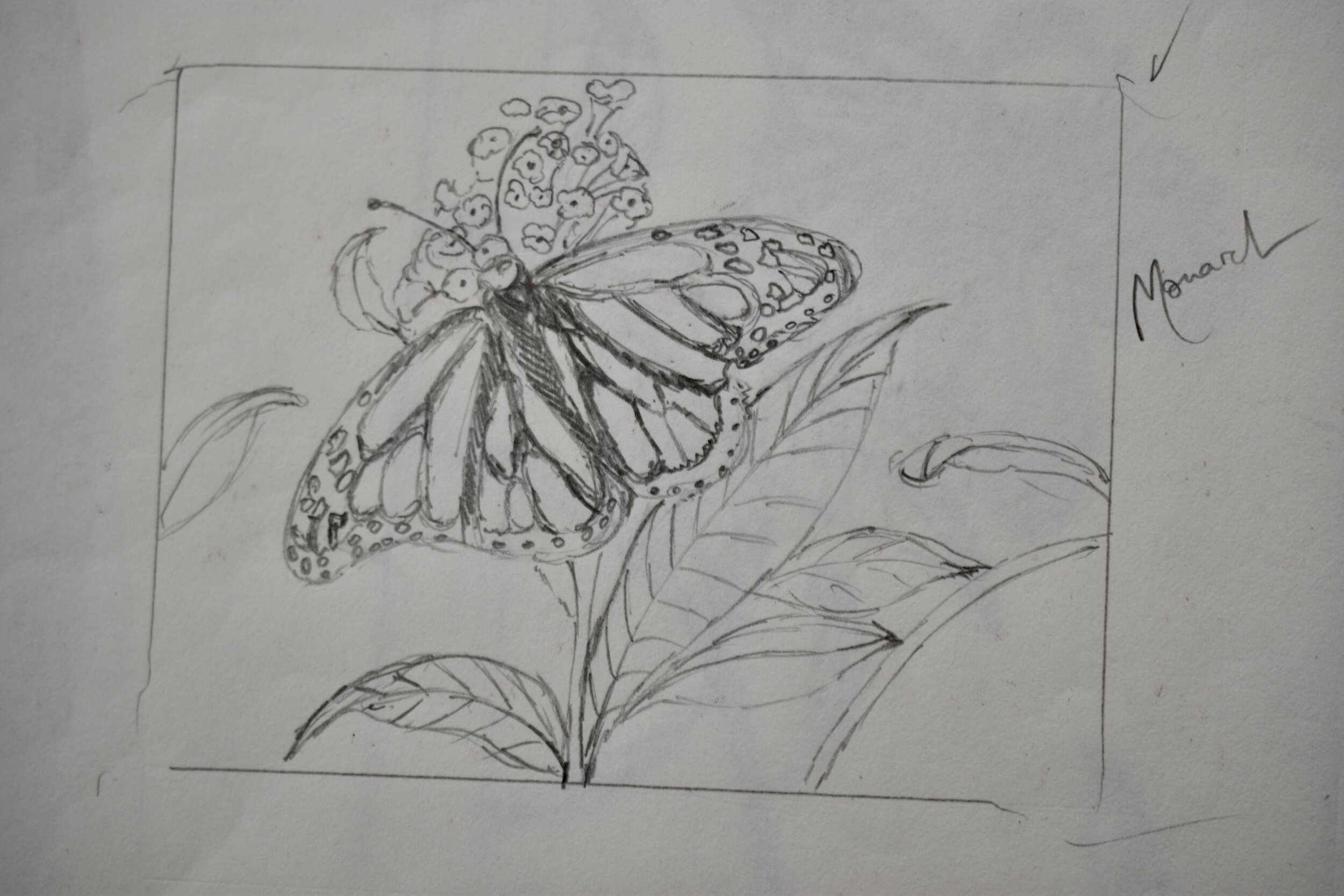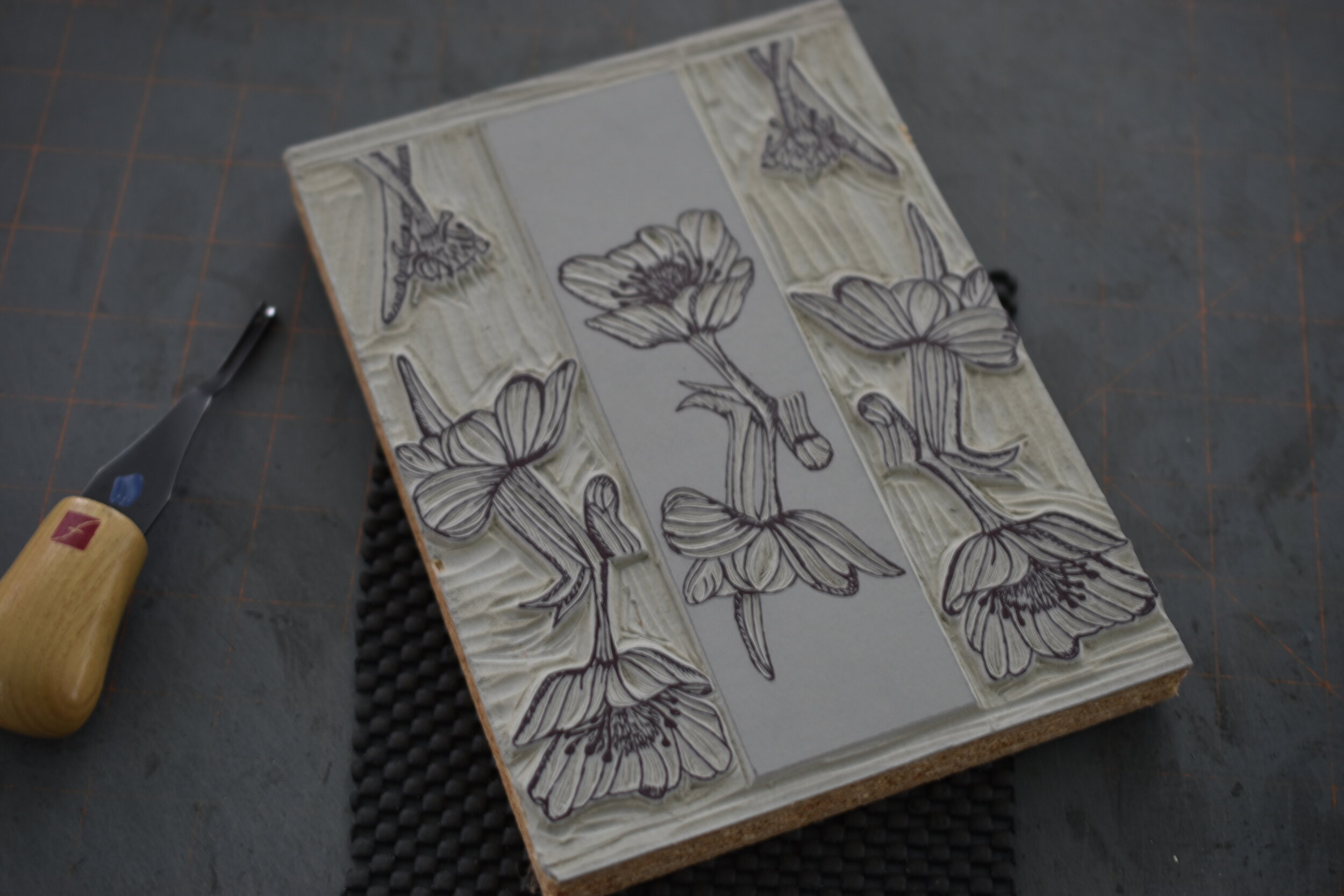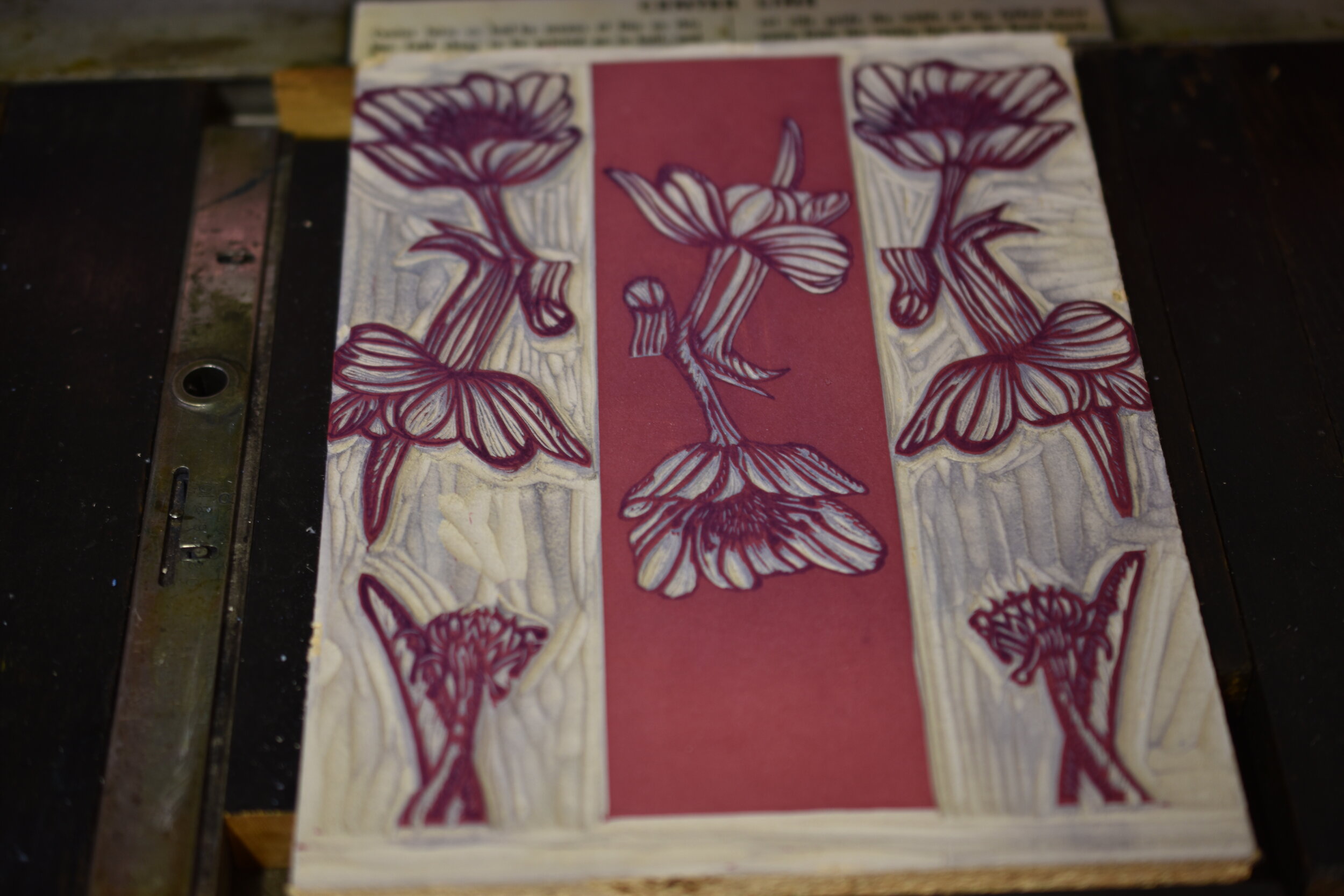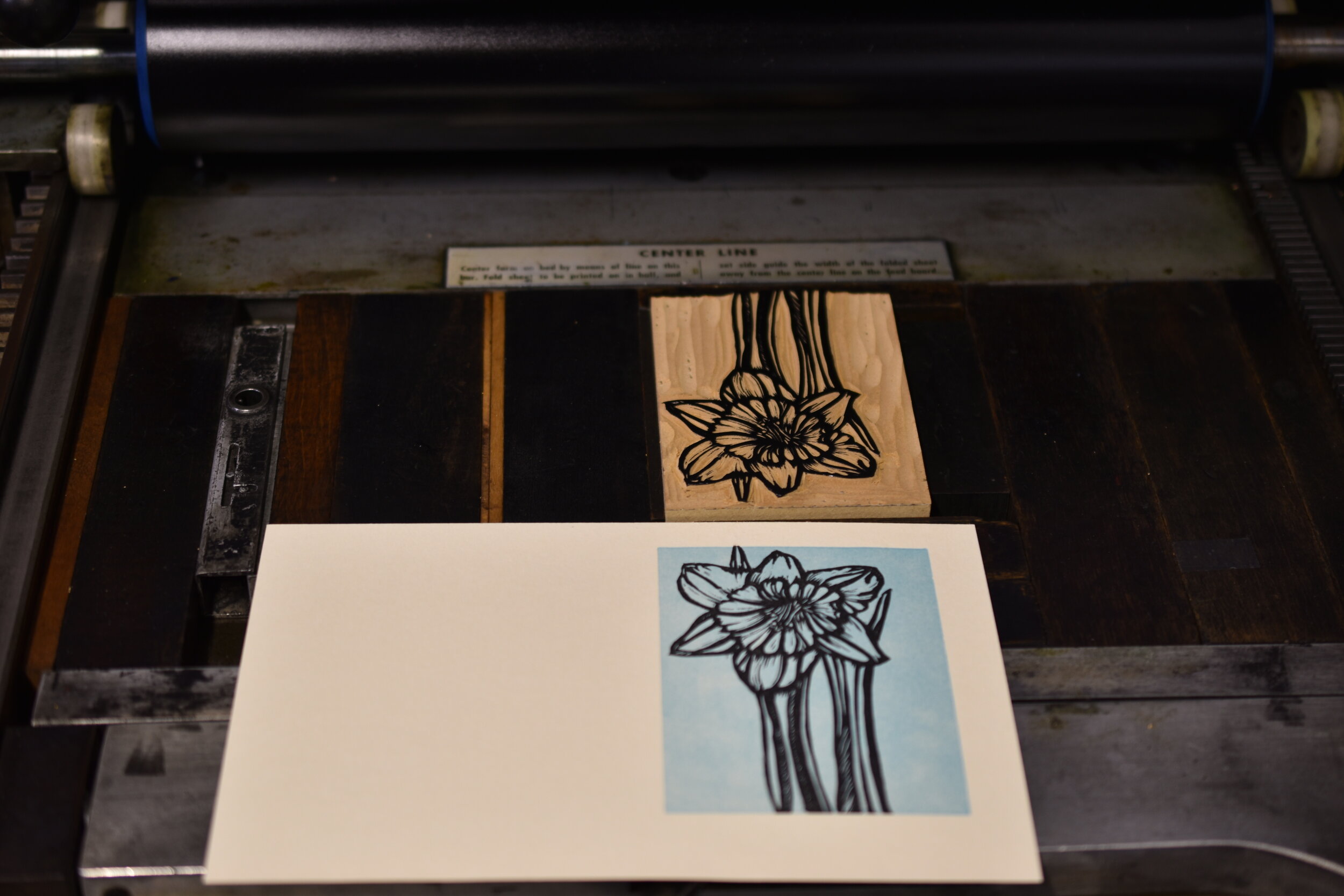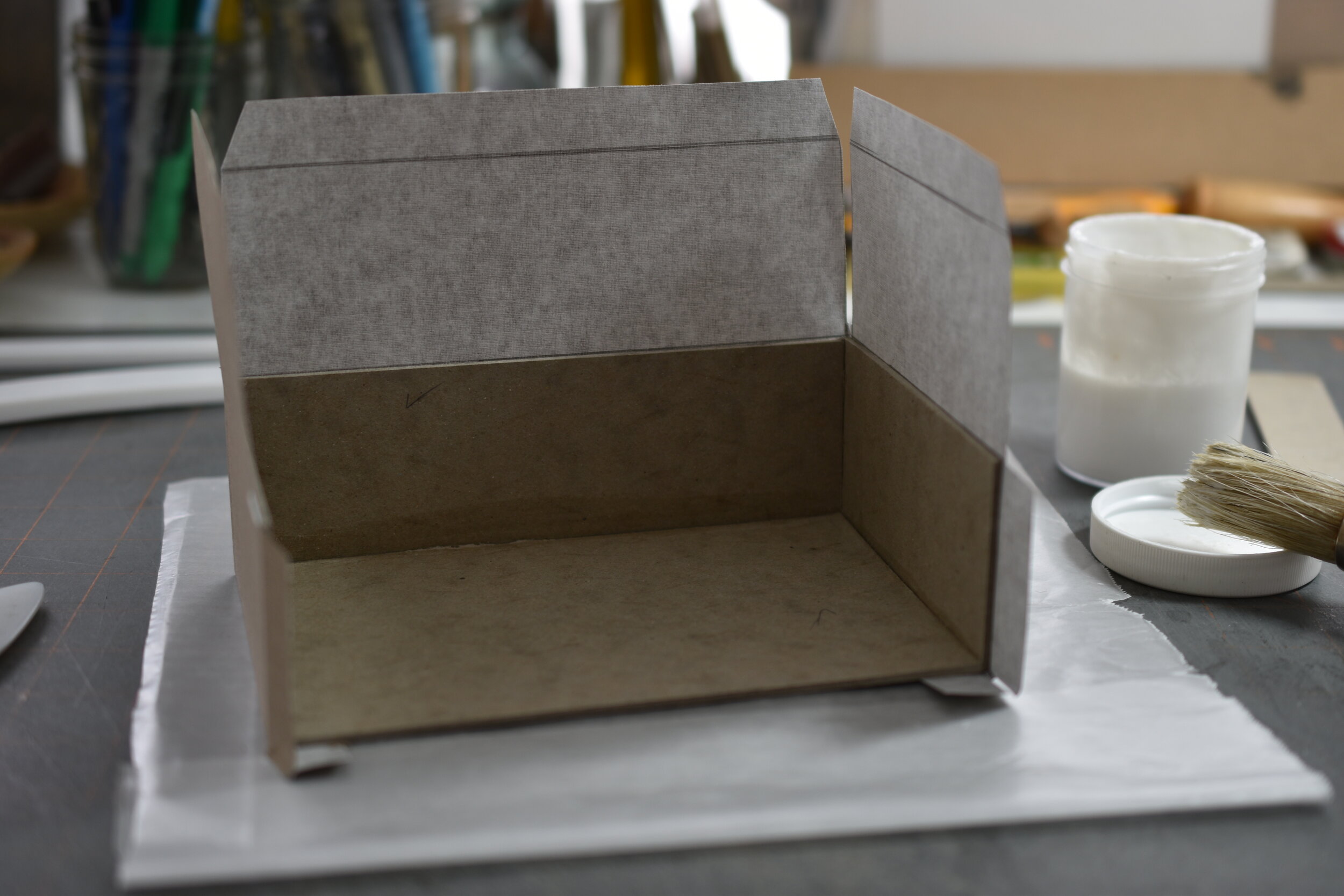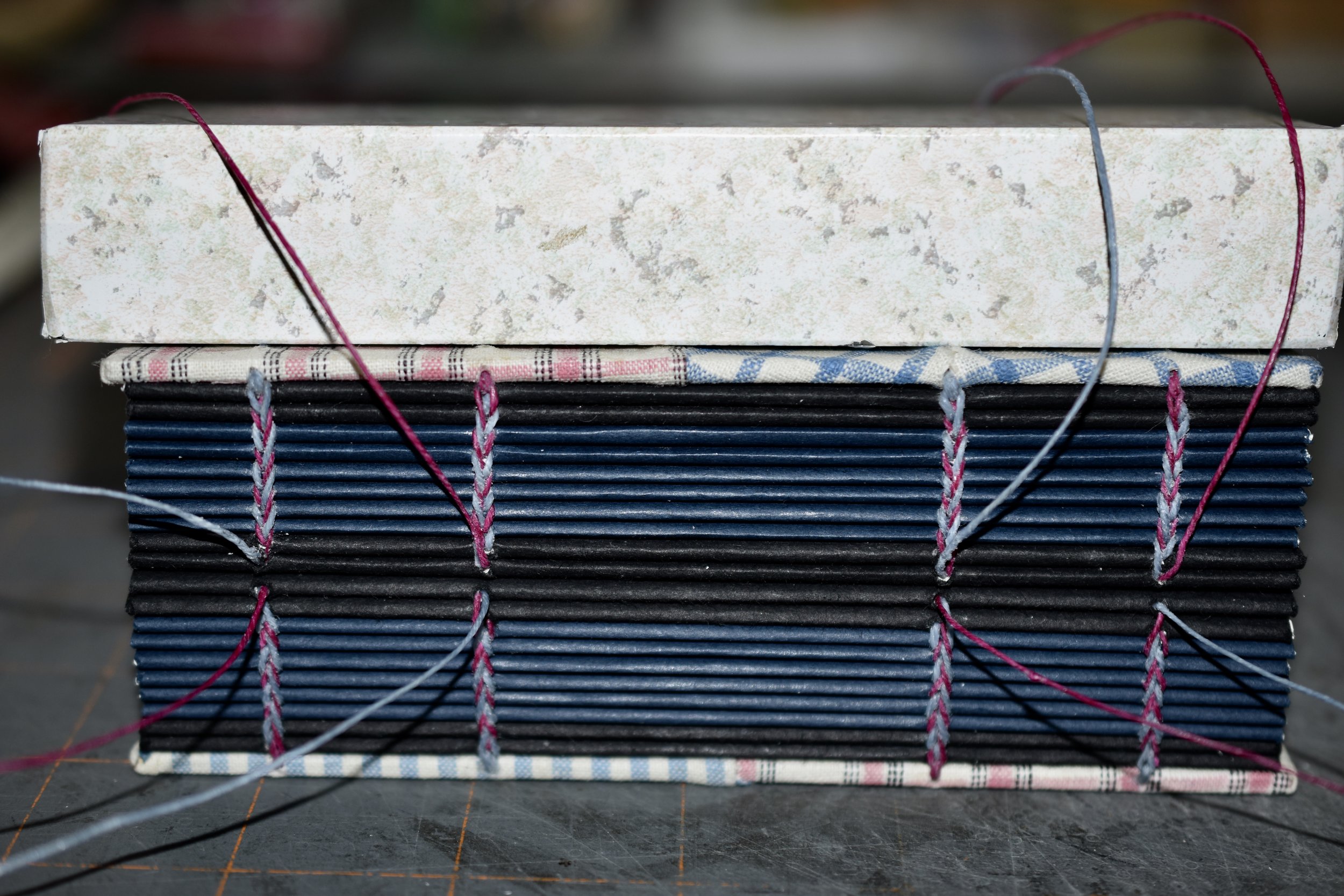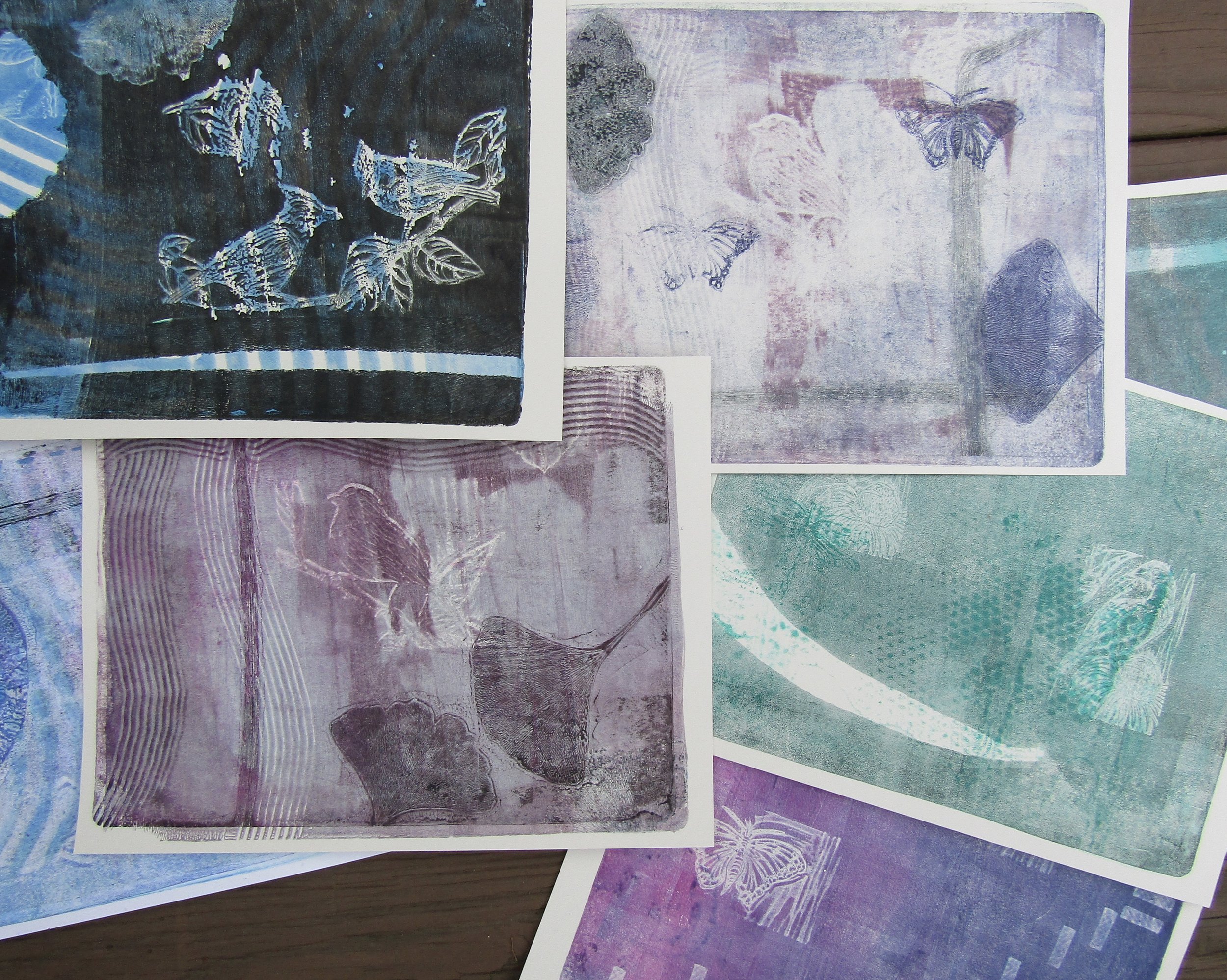After finding these feathers I decided to create a reliquary honoring these two birds that frequent my gardens. I began by sketching images to use in small tunnel books. I then transferred the drawings to small blocks for carving.
I also printed numerous pressure prints to use in these pieces. This image shows the bird prints, a selection of the pressure prints, and other items I was considering for use in the reliquaries.
Assembling the book.
I was now ready to begin the processes of covering the boxes, adding the hinged ‘doors’ and other embellishments and components.
The hinged ‘doors’ were covered with pressure printed papers and a print of each bird was placed into a recessed area on the door.
Components for the Goldfinch reliquary.
Back view of the Wren Reliquary.
Front view of the Goldfinch Reliquary.
Interior detail.
I frequently find bird feathers while gardening. Two of my finds inspired these pieces. A beautiful goldfinch feather and little wren feathers were the beginning of these boxed works. Here is a look at the processes I used to complete the Goldfinch Reliquary and the Wren Reliquary.
The wren is carved and ready for printing.
The goldfinch is carved.
The cut pages for the goldfinch tunnel book. The folded accordion papers will be the sides of this book, allowing for the layering of the cut pages.
I placed the completed tunnel books in Davey board boxes.
I placed a cover with a mica window on each boxed book. This allows the viewer to look into the layered images.
Components for the Wren reliquary. Note that a recessed area with actual feathers and a mica window was placed on the back of the reliquary. Vintage buttons were used as closures and feet.
Wren Reliquary - front view. I so love the buttons I used for the feet!
Opened - interior detail.
Back of the Goldfinch Reliquary. I have always cherished this feather and was glad to use it in this piece!
It took numerous steps and processes to complete these pieces. They were a labor of love celebrating two of my favorite birds - the Goldfinch and Wren.





























